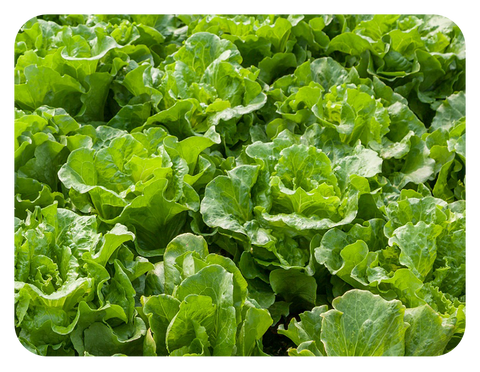There's nothing sweeter than home-grown strawberries - but destructive insects, diseases, and small animals tend to dash our hopes of picking plenty of juicy red berries. By carefully choosing what you plant next to your strawberries, you can help your strawberries fight these multiple enemies.
Fortunately, there are several plants that repel and deter pests and attract beneficial ones. Read on for 11 plants that are good companions for strawberries and which are bad neighbors to avoid.
What is companion planting?
Companion planting is the practice of placing plants near each other for mutual benefit. It can help deter pests, attract beneficial insects and pollinators, and ensure that the nutritional needs of different plant species do not conflict with each other.

The flip side of companion plant-identifying bad neighbors-is equally important, as it helps control or prevent the spread of pests and diseases, as well as the unilateral depletion of soil nutrients.
Always be skeptical of companion planting, as this is mostly based on the observations of long-time gardeners. You will often find conflicting information about which plants work well as companion plants.
11 good companion plants for strawberries
01 Lettuce
The compact size of lettuce makes it a good choice for planting next to strawberries. As leaf lettuces get bigger, they can disguise bright red berries from hungry birds.
02 Allium plants
Allium plants - leeks, leeks, Onions, and garlic - are good neighbors for strawberries. There is some evidence that they can help suppress fusarium wilt, a fungus that can affect strawberries. Their strong odor acts as a natural repellent against slugs and aphids.
As a companion plant to strawberries, chives serve a dual purpose. It has a strong onion flavor, so if you don't cut it all off and let it reach the flowering stage, it will attract pollinators. Plus, it's small enough so you can tuck it next to your strawberry bed, even in a small garden or raised bed.
03 Spinach
Similar to lettuce, spinach is a compact, cool-season plant whose leaves can hide ripe berries from predators. The saponins in spinach are natural insect repellents for garden pests.
04 Asparagus
Strawberries and asparagus are a typical spring pairing and are usually grown next to each other. Both are perennials with similar growth patterns - they both germinate in early spring, but they don't get in each other's way. Strawberry roots are short and shallow, while asparagus roots go 10 to 15 feet into the soil.
05 dill
Some people find the licorice smell of dill overwhelming, but for a companion plant, it's exactly what you want to distract insects from your strawberry plant. However, the time that dill shines as a companion plant is when it begins to flower.
The large umbels attract beneficial insects, such as hoverflies, whose larvae feed mainly on aphids but also on thrips. For dill throughout the summer, plant continuously every month from early spring until late summer.

06 Saints
The strong smell of sage can mask the smell of berry plants from insects and predators. Also, just like other herbs, if you let it bloom, its flowers will attract bees and other pollinators.
07 borage
Even if you don't cook with borage (the beautiful blue flowers and cucumber-flavored leaves are both edible), make sure to plant it next to strawberries. Because this prolific flowering plant attracts beneficial insects, such as parasitic bract wasps, predatory damsel bugs, and hoverflies, they all keep the pests in check.
Borage flowers also attract pollinators, so it is not only good for strawberries, but also for other garden crops that rely heavily on insect pollination, such as zucchini and summer squash.
08 Thyme
Getting thyme to bloom is key to harnessing its benefits as a companion plant. Thyme flowers attract pollinators and beneficial insects such as hoverflies that feed on aphids.
09 catnip
Strawberry aphids and spider mites are two common pests of strawberries. Catnip leaves contain chemicals called iridoids that act as natural insect repellents.
10 Yarro
This perennial ornamental also has a dual role as a companion plant. Yarrow attracts beneficial pollinators and repels animals with the strong smell of its leaves.
11Calendula
These easygoing annual flowers are one of the most popular natural pest control plants, and they also work well on strawberries. Their strong scent usually repels predators such as deer, rabbits and vermin.
The French marigold varieties have another benefit: they are one of the few plants that produce substances toxic to root-knot nematodes, which affect many crops, including strawberries. Marigolds are commonly grown as a nematode trapping crop.
10 plants to avoid growing near strawberries
Avoid planting any of the following next to strawberries:
Tomatoes: They are prone to verticillium wilt, a fungus that can spread to strawberries.
Eggplant: Eggplant is also susceptible to verticillium wilt.
Potatoes: Potatoes have the same problem as eggplant and tomatoes - they get verticillium wilt.
Capsicum: Another plant of the nightshade family commonly affected by verticillium wilt.
Melons: Not only are melons prone to verticillium wilt, but long, sprawling vines can easily overgrow strawberry fields.
Winter melon: Squash and winter melon often suffer from verticillium wilt. Also, it's hard to stop vines from invading your strawberry fields.
Cucumbers: All cucumbers suffer from verticillium wilt.

Peppermint: Especially in the Pacific Northwest, peppermint is often affected by verticillium wilt. It may be tempting due to its strong smell, but it is not recommended to grow next to strawberries.
Okra: Verticillium wilt commonly affects okra, which makes this plant a bad neighbor for strawberries.
Cruciferous vegetables: Not only cabbage, but all cruciferous vegetables, including kale, collard greens, cauliflower, kohlrabi, and brussel sprouts should not be planted next to strawberries, as they can stunt each other's growth.









